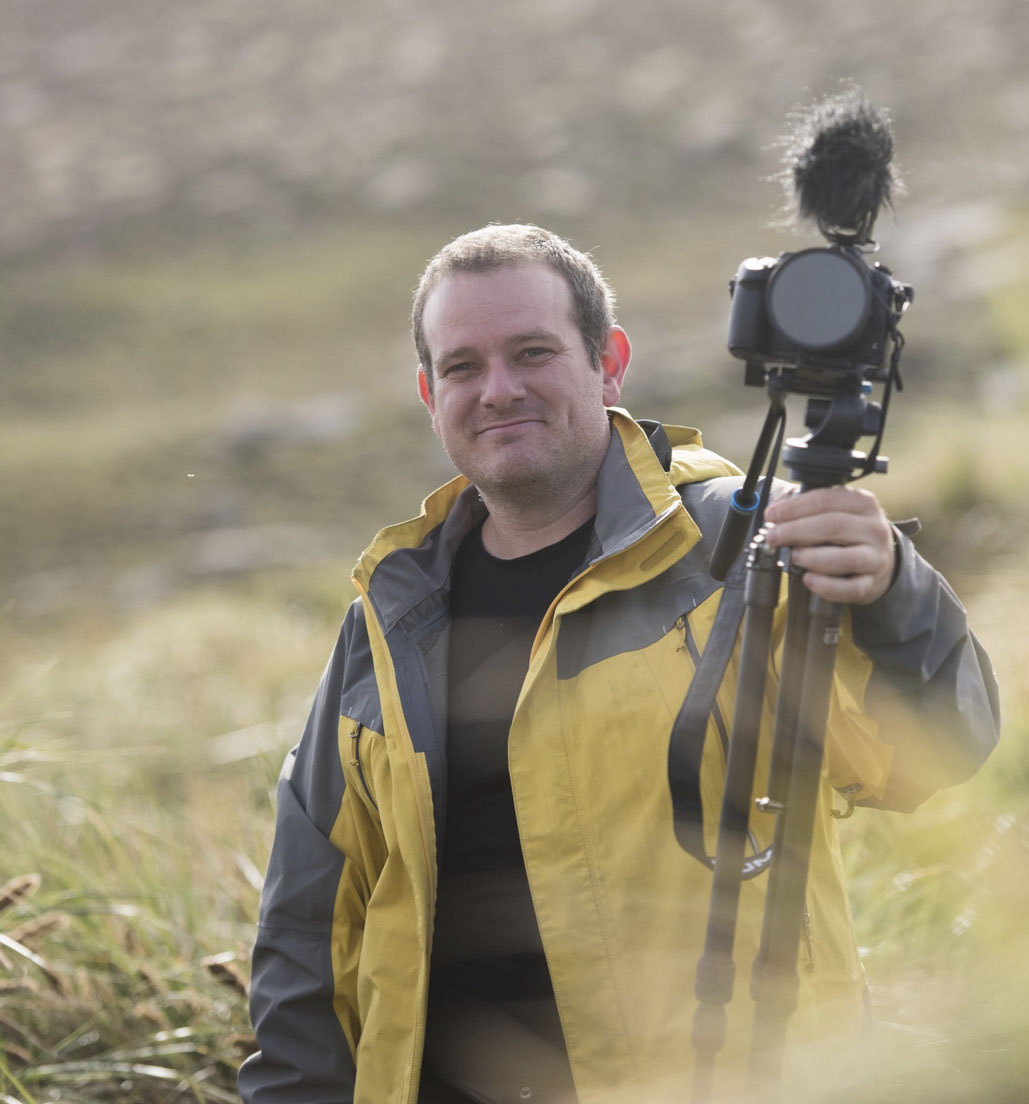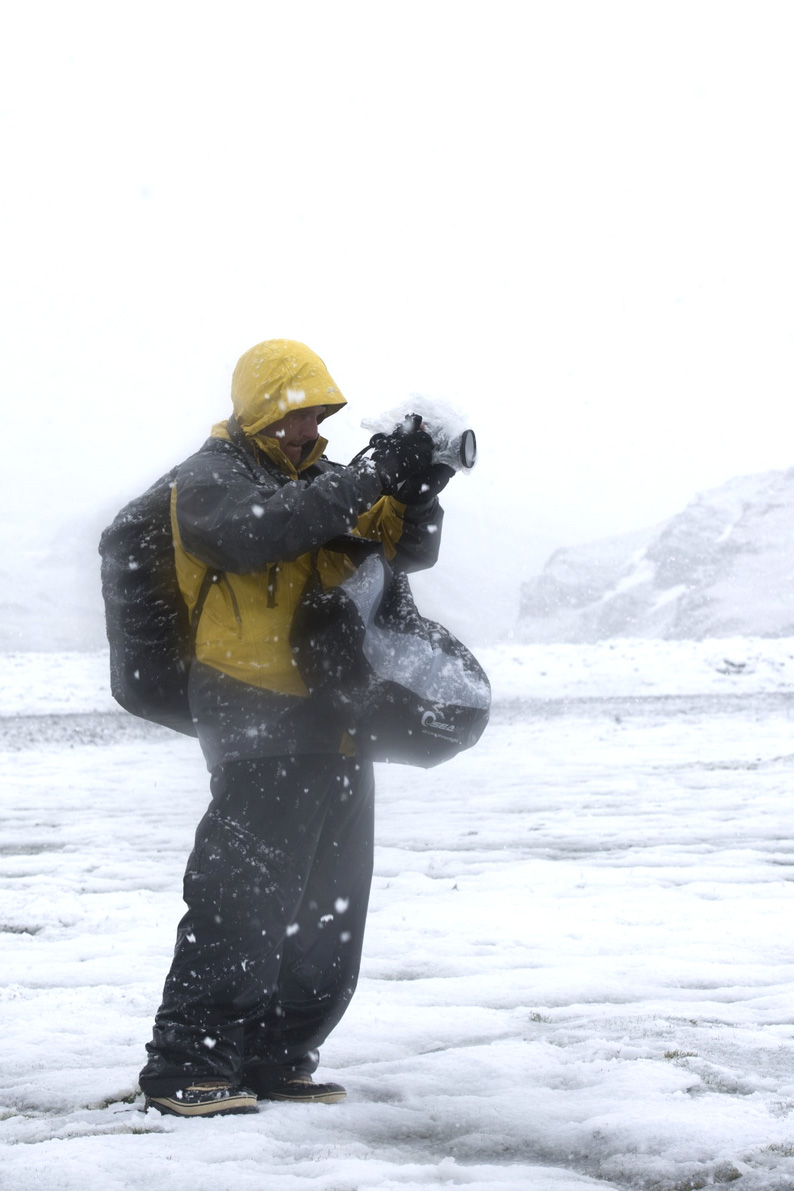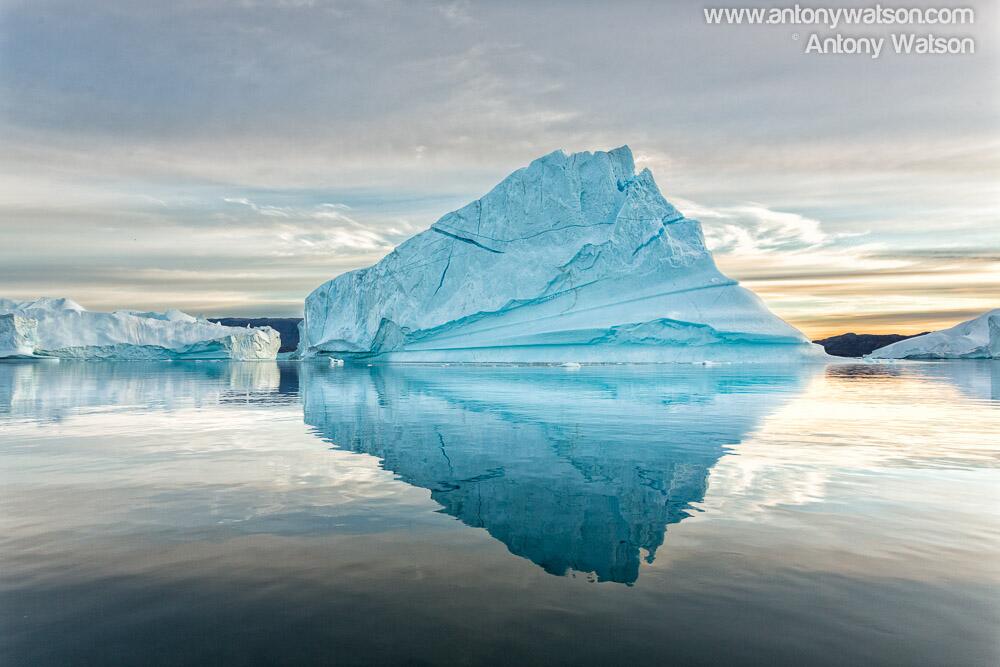A few months before leaving for Antarctica, South Georgia and the Falklands I bought a new Panasonic Lumix GH4 and an accompanying Panasonic Lumix G X Vario 12-35mm f/2.8 Aspherical Lens.
My stalwart video rig has been comprised of Canon 5D Mark III’s (previously the 5D Mark II’s). The Canon DSLRs have been my go to cameras for a few years now. They work well. Lens options are great and combined with the Magic Lantern firmware, they’re better than Canon ever intended them to be. With numerous pieces of work shot in RAW via Magic Lantern I was really looking for an improvement in image quality and a simpler post production workflow. The 90 megabytes per second of Canon RAW footage was really starting to wear thin especially with the prospect of long projects such as filming in Antarctica, South Georgia and The Falklands for three weeks.
If you’re familiar with the Panasonic Lumix GH range of cameras, you’d recall the GH2 and subsequent GH3 were very highly regarded cameras offering great image quality in a compact unit and at exceptional price. The reviews I’d read during my research indicated the GH4 had followed in their stead with some significant improvements and the addition of 4k video, 1080p@96fps over cranking and improvements in noise and dynamic range. Philip Bloom did a good video review of the GH4. It’s not the camera of all cameras. But it’s hard to beat for the financial outlay.

First and foremost with my foray into the Antarctic regions of our glorious planet I was a little concerned with regards to the durability of the Panasonic GH4. To be brutally honest, I’m always concerned with all camera equipment in these regions bar my Canon L Series Lenses and 1 series bodies and even those have their limitations in extreme environs.
The Panasonic GH4 has reasonably good weather sealing. It was certainly put through its paces on this journey. With temperatures in Antarctica dropping to minus thirty degrees Celsuis in the windy open areas, with sheltered air temperatures of minus ten degrees celsius, ice shards flying horizontal at fifty knots, the GH4 was given a baptism of ice! The salt water spray from shooting in a Zodiac and gentle rain of South Georgia rounded out what can only be describe as the durability trial of a lifetime for the GH4.
So how well did the GH4 go?
Capturing moments with wildlife and expeditioners meant I needed to be prepared to capture a ‘moment’ at the drop of a hat. With landings ashore lasting between two and four hours, I never once turned off the GH4, it’s battery saving sleep mode was the only reprieve the battery received. Its battery life can only be described as phenomenal. On the harshest landed, in the coldest temperatures, the GH4 failed to wake from sleep mode. Looking in the view finder a message was displayed. “Battery Empty” or something to that effect. Considering how much footage I’d shot on the battery and the bone freezing temperatures I was surprised the battery had last that long. But to be honest, out of all the shooting I did in the 3 week period, this was the only time I had to change a battery in the field. Most landings saw me return to our ship with an hour of footage and battery life to spare. Something that just NEVER happens when shooting with the Canon bodies I’ve been using in the past.
The 12-35mm f/2.8 Lumix G lens (24-70mm equivalent) was faultless and was used for 90% of the footage shot during the 3 week period of shooting. Auto focus was quick and accurate even when focusing on harsh white snow. Combined with a variable neutral density filter to control exposure, keeping shutter speed at as close to 180 degrees as possible, this lens delivered. A good balance of a desired depth of field and ISO was easy to achieve on the Micro 4/3 sensor for the shooting I was doing but a faster lens would be nicer for times when a shallower DoF is required. The lens with its variable length lens barrel was my only point of concern with the GH4 lens combination with water and snow accumulating on the lens, I paid particular attention to ensure I wiped the lens barrel before changing focal lengths.
The GH4 worked well at higher ISO levels, better than I expected. But I must admit for most of the shooting scenarios there was more light I needed for the majority of shooting hence the application of the variable Neutral Density filter to keep my exposures in check.
One could say I am religious when it comes to keeping my gear clean and dry in the field. I’ve got a job to do and I don’t want to have gear failure inhibit my ability to capture some amazing imagery. The GH4 was covered with salt water spray, snow, sleet and rain during this three week period. Being judicious with a good cloth whenever possible ensured my rig was kept clean dry and continuing to function. During some shooting I did use a wet weather rain spray cover for the GH4 as I would with my Canons because the weather was pretty insane. After the days shooting, I put the GH4 in my camera bag when returning to ship, allowing it to acclimatise from the minus 10 degree temperatures to the plus twenty two degrees and humid environ of the ship. A number of Nikons and Canons failed on this expedition due to condensation when DSLRs were not given the appropriate time to acclimatise before being exposed to the warm comfort of cabin temperatures. I had no problems with my GH4.
For ergonomic and stability reasons I mounted the GH4 in a camera cage with two vertical grips which allowed me to brace and stabilise the camera in high winds. The added benefit of have the camera mounted in a cage was mounting points for my Rode microphone and Tascam digital recorder. As much as having a light camera is desirable from the aspect of having to lug it around, holding a diminutive light weight camera still is not as simple as it seems. The addition of a camera cage added the stability I needed. The camera cage itself didn’t fair as well as the GH4, with the cage allen key bolts developing rust from the salty sea spray whilst the GH4 looks as good as new.
Shooting in the field I shot a variety of footage. 1080p@60fps 4k@24fps and 1080p@96fps. Making use of the camera ability to register custom settings I was able to set up my exposures, apertures and my variable ND filter and save each as a custom setting with only the need to update these based on changes in light and cloud cover. Changing between shooting 4k@24fps to 1080p@96fps became a simple turn of the mode dial from C1 to C2 and I was ready to shoot.
The majority of my footage was shot in 4k@24fps with my final destination output targeted at 1080p@24fps product . The ability to down scale to 1080p footage brings a level of detail that the Canon 5D Mark III with Magic Lantern RAW can only but dream to achieve. To be honest, the 5D Mark III RAW footage I’ve shot in the past looks out of focus and soft compared to footage shot on the GH4. And the ability to punch in to a 4k frame and extract a 1080p frame is not to undervalued. effectively giving my two fields of view, say a long and a medium shot, in the same footage.
Shooting the brilliant white snow covered landscape of Antarctica is a test for any camera. In camera metering on 99% of cameras is confused by the mass of white that fills a frame usually with the end result being footage of ‘dull grey’ snow. The live histogram of the GH4 came in very handy along with the Variable ND filter to keep exposures in check and to ensure the whites of the Antarctic snow capped vistas were white but with detail retained. The ability to ‘place’ the histogram on the rear LCD where I wanted it with a flick of my finger was great when composing tripod shots with the variability of penguins walking past.

Auto Focus in low contrast exceedingly bright conditions can be trying for any camera. Only in the most extreme of conditions did the GH4 focus hunt which is to be expected from most cameras bar the elite focusing DSLRs. Having the ability to simply tap the LCD where I’d like the camera to focus was a dream.
The LCD was bright and visible in all the conditions I experienced. The tilt and swivel capabilities came in handy on numerous occasions when shooting really low or really high. A welcome capability over shooting with my Canons. The touch screen capabilities for using custom function soft buttons on the screen was a novelty I didn’t use much. Navigating through images and videos via Review I did most via physical dials initially as old habits die hard.
The auto switching between the LCD and the Live View Finder I turned off on the first day as I invariably moved my fingers near the sensor all the time seeing the display switching between the LVF all too often. The LVF was a pleasure to use. The information displayed being the same as that on the rear LCD made it a breeze to shoot via the view finder. Particularly useful for shooting stills, not so much for video. The real time histogram within the viewfinder was also useful for stills shooting.
To round out my experience with the GH4 I used and tested two EF lens adapters. A generic speed booster which I found the quality to be un acceptable in tests. And a manual aperture EF lens adapter which worked extremely well considering its simplicity as long as you didn’t stop the manual aperture down to far thereby causing vignetting. I’d love to get my hands on a Metabones Speedbooster with full Autofocus and IS capabilities but they weren’t in stock in any time frame that would’ve facilitated me taking one on Antarctica.
Having just returned home to my family after two expeditions to Antarctica and two weeks in Patagonia I’ve had little time to sit down and post process any footage or stills from the GH4 but early in the new year I will have some footage and stills shot on the Panasonic GH4 to share.

1 comment for “The Panasonic Lumix GH4 meets Antarctica, South Georgia and The Falklands”